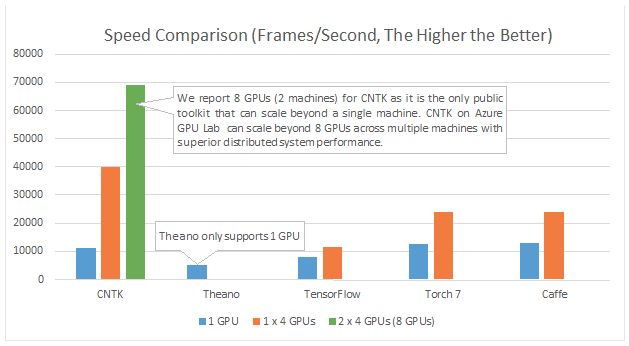
Microsoft Releases Deep Learning Toolkit

Microsoft has released to the open source community a set of internal GPU-powered tools designed to boost the performance of artificial intelligence technology used for computer speech recognition.
In a blog post, Microsoft (NASDAQ: MSFT) announced Monday (Jan. 25) it is releasing its Computational Network Toolkit on Github. Company researchers said they undertook the project out of necessity: Current tools used to improve how computers understand human speech were slowing progress.
A group of Microsoft volunteers “set out to solve this problem on their own, using a homegrown solution that stressed performance over all else,” the company said. “The effort paid off.”
According to the company, Xuedong Huang, Microsoft’s chief speech scientist, led internal testing showing the toolkit outperformed four other computational toolkits widely used by developers to create deep learning models for speech and image recognition. The key improvement was better communications capabilities, Microsoft said.
The company touts the toolkit’s performance as a significant efficiency improvement in a field where “performance gains are incredibly important in the fast-moving field of deep learning, because some of the biggest deep learning tasks can take weeks to finish.”
Microsoft said its toolkit is currently the only platform that can scale beyond a single machine. It deployed eight GPUs on two machines running on its Azure Cloud GLU Lab. The approach can scale beyond eight GPUs across multiple machines, according to the company, resulting in improved distributed system performance.
Frames-per-second speed comparisons revealed that Microsoft’s toolkit outperformed four other toolkits by a wide margin (see chart). They were Theano, TensorFlow, Torch 7 and Caffe.

Source: Microsoft Corp.
Microsoft attributed much of the performance increase to its use of GPUs, which have proven ideal for processing the types of algorithms underpinning advances in artificial speech and machine learning.
Researchers also are increasingly running machine learning algorithms based on neural networks. “Many researchers see deep learning as a very promising approach for making artificial intelligence better,” Microsoft said.
Prior to this week’s released on Github, the Computational Network Toolkit was turned over to academic researchers last April via Codeplex under a more restricted open source license.
This week’s released was prompted in part by Microsoft’s belief that the toolkit “can be used by anyone from a researcher on a limited budget, with a single computer, to someone who has the ability to create their own large cluster of GPU-based computers.” The greater the scale, the larger the experiments or calculations researchers can perform.
Along with deep learning startups, Microsoft said its toolkit is also suited to established companies processing large amounts of real-time data.
Other applications include “systems that can accurately recognize and even translate conversations, as well as ones that can recognize images and even answer questions about them,” Microsoft said.
Recent items:
Machine Learning’s Big Role in the Future of Cybersecurity
Machine Learning Tool Seeks to Automate Data Science


























